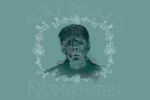The explosion of blockbuster sci-fi/fantasy adaptations began with Peter Jackson’s “Lord of the Rings” trilogy and the “Harry Potter” movies in the early 2000s. These films were popular among those who read the books that the films were based on, as well as those who didn’t. However, movie producers must understand that whenever they make a movie adaptation of a book, it is impossible to please every viewer. Filmmakers have to satisfy both the fresh fans who are new to the series as well as those who expect the movie to include everything from the book.
Eliminating Scenes for Sci-Fi/Fantasy Adaptations
Because movies take less time to watch than books take to read, directors of book-to-movie adaptations will frequently cut out or rush through certain scenes to make the film’s length shorter. Oftentimes, the scenes that are cut out are the “unimportant ones” that don’t have much to do with the main story. However, sometimes directors misjudge which scenes should be glossed over.
For example, I saw the “Harry Potter” movies before I read any of the books, and some essential details were cut out of the films that just left me confused. In the book version of “Harry Potter and the Chamber of Secrets,” for example, it is revealed that Ginny Weasley wrote in Tom Riddle’s diary, which explains how Riddle was able to control her. In the movie, this detail is not mentioned. It appears that Ginny was suddenly possessed by Riddle. Perhaps the directors assumed that given the popularity of the “Harry Potter” book series, most of the movie’s audience would have read the source material and understood why Ginny acted the way she did — an unreasonable assumption to make as a filmmaker.
Movies based on books should not simply be made to satisfy the book readers: They should also make sense to non-book readers. This isn’t to say that all sci-fi/fantasy adaptation filmmakers make this mistake, but it is certainly a potential problem that adaptations can run into. The elimination of these scenes is just one of the reasons why many readers believe that the book version of a particular story is usually better than its film counterpart.
Emphasizing What’s Important — The Problem With Multipart Movies
On the contrary, we have also seen book adaptations that are split into multiple parts like “The Hobbit,” “The Hunger Games” and the aforementioned “Harry Potter.” This creates an opportunity for filmmakers to slow down the pace of their movies and incorporate more scenes from the books.
However, audiences were still not satisfied with these movies. The decision to make “The Hobbit” — which is about 250-300 pages long — into three 3-hour films did not please fans. Many saw it as a box office cash grab, as three movies have the potential to make triple the profit of just one film. Instead of including more scenes from the book, the movies added new characters like Legolas and Saruman that were either not in the book or only briefly mentioned.
Additionally, the last movie is titled, “The Hobbit: The Battle of the Five Armies.” The actual battle that this movie is based on is about 20 pages in the book, but Peter Jackson made it into a 3-hour movie event. I recognize Jackson’s attempt to create a film that is not bound by the whims of nitpicky bookworms, but the result strayed too far from the book. A key part of a successful sci-fi/fantasy adaptation is maintaining the tone of the original story, and Jackson failed to do that by emphasizing epic battle scenes in a movie that should really be about adventure and character development.
Even the multipart films from other franchises are often not favored by audiences. Parts 1 and 2 of “The Hunger Games: Mockingjay” have a considerably lower score on Rotten Tomatoes compared to the other two movies in the franchise.
An alternative medium for adaptations is television. Television series can go at a slower pace and incorporate more scenes and characters from the books. We have seen more screenwriters turn to this alternative with the creation of television shows like “Game of Thrones” and “The Witcher.”
The Issue of Casting
But solving the pacing issue is not enough to satisfy bookworms. Many fans compare a show’s casting to the characters’ descriptions in the books. For instance, the showrunners of “The Witcher” cast two darker-skinned women to play characters that have pale skin in the books. While some viewers, myself included, welcomed Netflix’s attempt to include more people of color in fantasy television shows, others were outraged by the discontinuity.
However, these critics need to understand that many other characters have been miscast in this same fashion without receiving the same outrage from audiences. One example is the protagonist of “The Hunger Games,” Katniss Everdeen, who has olive skin and gray eyes but was portrayed by Jennifer Lawrence who has pale skin and blue eyes.
There are certainly exceptions, but most sci-fi/fantasy adaptations are not telling stories with characters who are defined by their physical appearance. It is much more important to find an actor that can embody the character’s personality traits than one that perfectly matches the character’s looks.
Making a Successful Sci-Fi/Fantasy Adaptations
Sci-fi/fantasy adaptations do not need to copy every single aspect of a book or series for fans to enjoy them. For instance, Netflix recently released a fantasy show titled “Shadow and Bone,” which is based on the trilogy of books with the same name by Leigh Bardugo. There is another book series by Bardugo titled “Six of Crows,” which takes place two years after the “Shadow and Bone” trilogy. However, the showrunners made an interesting choice and decided to incorporate the characters from the “Six of Crows” duology into their telling of “Shadow and Bone” even though those characters were not a part of the original book trilogy.
The choice seemed to work for them — the show has great ratings on Rotten Tomatoes and book fans, myself included, are generally pleased with the adaptation. So how did a show adaptation that differed so significantly from its source material do so well with fans?
I think a lot of the show’s success has to do with the showrunners’ ability to strike a balance between including the essential details of the original story, which keep newcomers to the series engaged, and including new elements that keep original fans interested. They told the original story of “Shadow and Bone” in a way that allowed time to develop the various characters while adding embellishments like introducing characters from other books.
I certainly do not think that sci-fi/fantasy adaptations need to copy and paste every part of the book into the film adaptation. In fact, I think precisely recreating scenes from the book will result in the source material overshadowing the movie. However, adaptations should not stray too far from their book counterparts. Creators need to find the balance between adapting new elements and maintaining the tone of the original story.
















